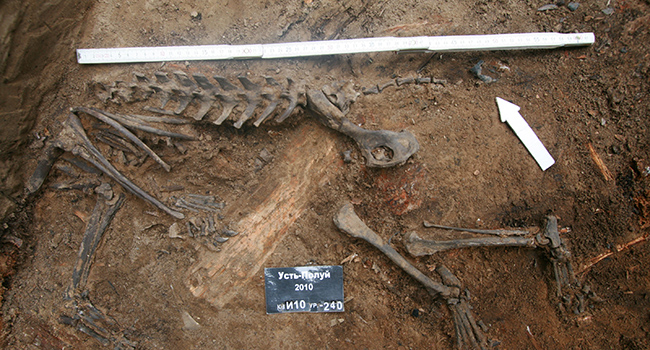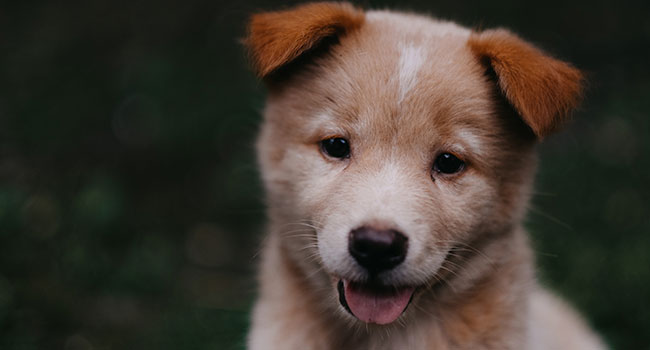
Genetic analysis of the remains of ancient dogs shows that they were being domesticated at least as far back as the last ice age, and likely even before then. (Photo: Supplied)
The close bond between humans and dogs stretches back into the last ice age, according to new international research involving a University of Alberta archeologist.
Genetic analysis of the remains of 27 ancient dogs shows that at least five major ancestry lineages had diversified by 11,000 years ago, “demonstrating a deep genetic history of dogs during the Paleolithic,” write the authors of the study published recently in Science.
“Right after the end of the ice age, there’s already quite a bit of differentiation in these dogs, which means domestication originated well into the ice age – maybe 15,000 years ago or earlier,” said Robert Losey, an archeologist in the Faculty of Arts and one of the study’s 57 international authors.
The new findings bolster growing evidence of a deep link between humans and dogs going back tens of thousands of years, said Losey, who has excavated ancient dog remains in North American, the Siberian Arctic and Eastern Russia.
“As soon as we see skeletal remains that look like the modern dog – about 14,000 years ago – we see dogs being buried,” he said, adding there are more prehistoric burials of dogs than any other animal, including cats and horses.
“Dogs were treated just like people when they died. They were carefully placed in a grave, some of them wearing decorative collars, or next to other items like spoons, with the idea being that they had souls and an afterlife.”
Modern dogs are believed to have descended from the Eurasian grey wolf, one subspecies of which branched off and began interacting with humans between 30,000 and 40,000 years ago.
Before this latest study, there was precious little DNA evidence of ancient dogs to work with, said Losey, because most remains did not yield high-quality results.
But in recent years, archeologists from Europe, Asia, North Africa and the Americas have been sending remains to geneticists as part of an international collaborative project, and they’ve had better luck.
“We now are starting to get glimpses of really high-definition information about the evolution of the dogs,” said Losey.
Most striking is that changes in dog genetics tend to track with changes in human genetics, “particularly related to major population movements.”
Geneticists compared genomes of the 27 dogs with those of 17 humans who lived at the same time and place in what is now modern Europe. The results show that when humans migrated, they took their dogs with them.
“As humans and dogs started to expand into Europe with agriculture, the dogs that show up in those sites look like a mix of the pre-existing dogs in the Near East,” said Losey.
Dogs were certainly useful for practical purposes, such as hunting, herding and security, but “people clearly had emotional attachments to their dogs from the very beginning,” he added.
“So it’s really not surprising that when human populations moved, they took their dogs with them in many cases. It does speak to that bond.”
Losey said while the latest study helps archeologists better understand the evolution of dogs, their precise origin has yet to be determined.
“Where in Eurasia did they first appear? What wolf populations founded dogs originally? We still don’t know.”
| By Geoff McMaster
Folio, a Troy Media content provider partner, is the University of Alberta’s online publication.
The views, opinions and positions expressed by columnists and contributors are the author’s alone. They do not inherently or expressly reflect the views, opinions and/or positions of our publication.


